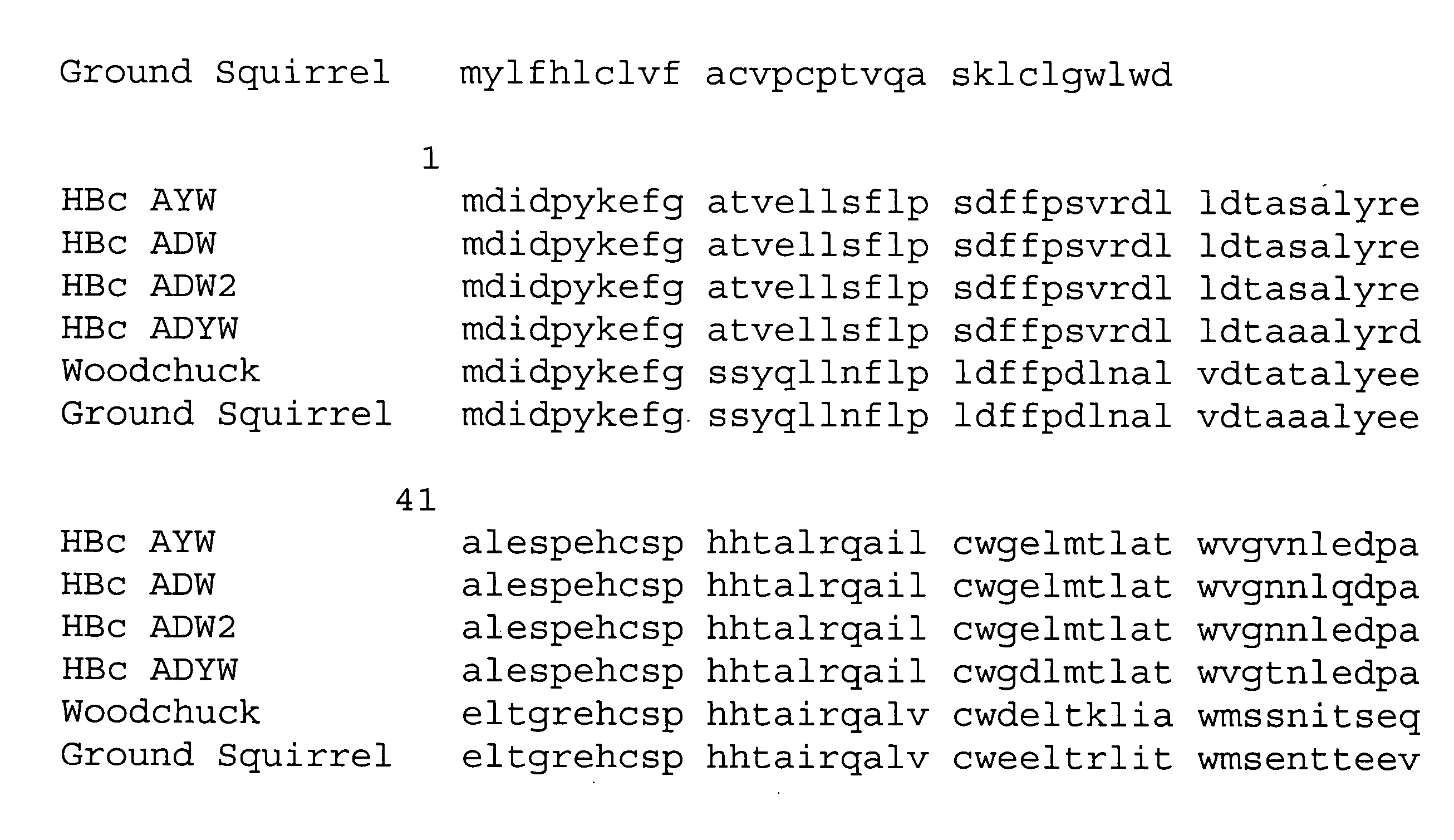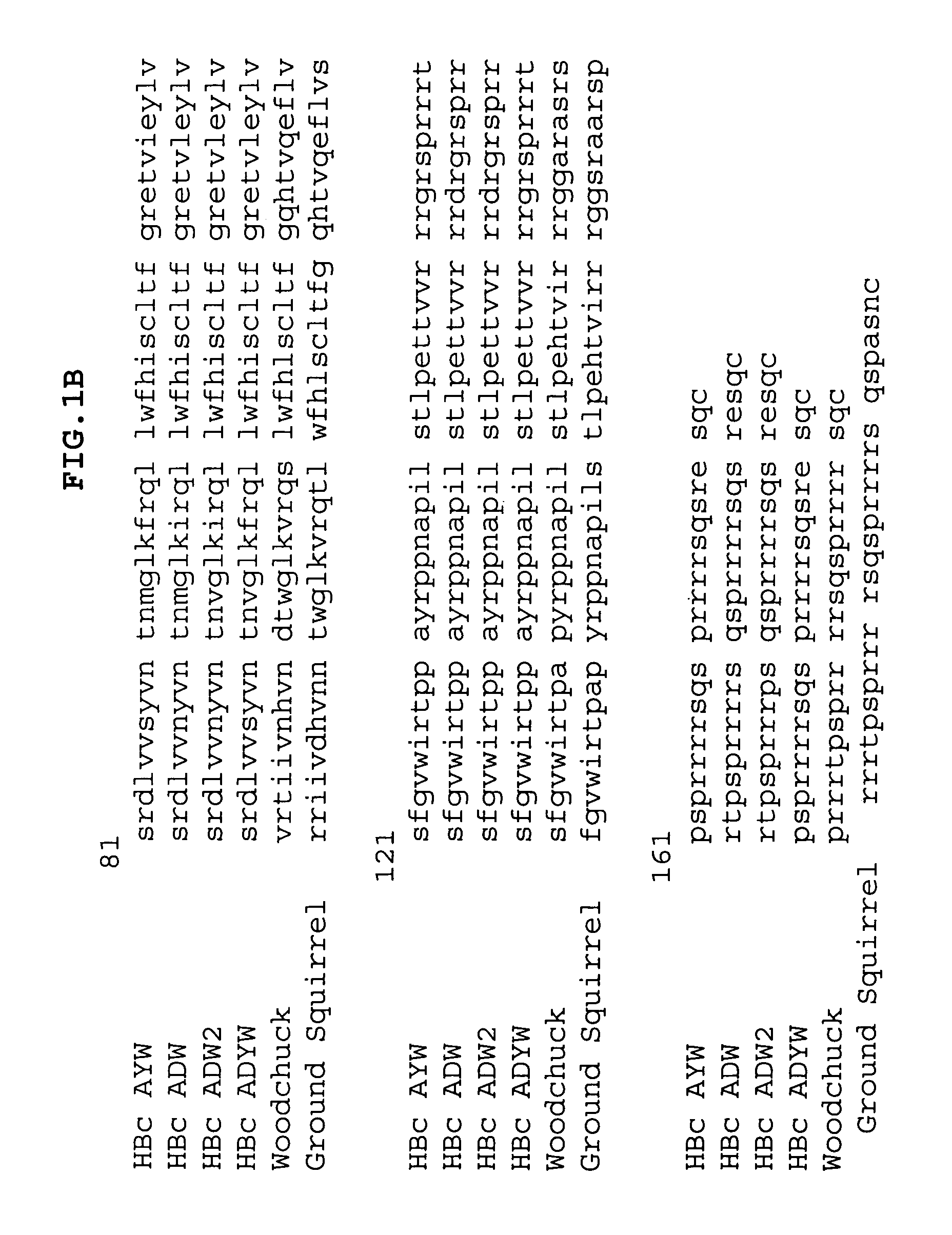Stabilized virus-like particles and epitope display systems
- Summary
- Abstract
- Description
- Claims
- Application Information
AI Technical Summary
Benefits of technology
Problems solved by technology
Method used
Image
Examples
example 1
Construction of Stabilized HBc Polypeptide VLPs Using the M2 Extracellular Domain
[0190] To illustrate the ability of the N-terminal region of the influenza virus M2 protein to stabilize hepatitis B virus core-like particles in a non-covalent manner, the extracellular domain of M2e was fused to the C-terminus of C-terminally truncated HBc polypeptides. To ensure that the intrinsic cysteine residues did not contribute to stabilization, a version of M2 (positions 2-24), where the cysteines were mutated to serines was used (CV-1895, V7.M2e(2C>2S). To construct the expression vector, V7.M2e(2C>2S), a pair of oligonulceotides was annealed and inserted into expression vector V7 (below), which accepts insertions after amino acid V149 of the HB capsid polypeptide gene. This is shown schematically in FIG. 2.
[0191] Thus, a new vector was constructed to enable the fusion of self-binding peptides to the C-terminus of a HBc chimer. Unique EcoRI and SacI restriction sites were inserted between H...
example 2
Analysis of Stabilized HB Capsid Polypeptide VLPs
[0194] Following expression and purification, the particles were analyzed for their ability to retain their particulate morphology using analytical size exclusion chromatography. Particles without C-terminal stabilization (e.g. CV-1048) exist as a mixture of particulate and non-particulate material when analyzed in this manner (FIG. 3).
[0195] Similar analysis of CV-1895 particles revealed that they eluted as homogeneous particle structures (FIG. 4). These data indicate that the M2e(2-24, C17S, C19S) sequence, when present fused to the C-terminus of HBc, forms intermolecular interactions that stabilize the particle structure. Those data further indicate that the intermolecular stabilization occurs in the absence of the cysteine residues at M2 positions 17 and 19.
example 3
Construction of Stabilized HBc Polypeptide VLPs Using the GCN4-p1 Leucine Zipper
[0196] To examine the ability of the leucine zipper domain of the yeast GCN4 transcriptional regulator to stabilize hepatitis B capsid polypeptide particles, in a non-covalent manner, a modified leucine zipper derived from GCN4 protein, GNC4-VL that forms both dimers and trimers in solution, is genetically fused to the C-terminus of C-terminally truncated HBc particles. Following the method of Example 1 to construct the expression vector, synthetic oligonulceotides encoding GCN4-VL are annealed and inserted into expression vector V7 that accepts insertions after amino acid V149 of the HB capsid polypeptide gene. The peptide attached to the HB capsid in this way has this sequence:
SEQ ID NO:282RVKQLEDKVEELLSKVYHLENEVARLKKLVGER
[0197] Particles obtained are more stable by analysis using analytical size exclusion chromatography than the original CV-1048 VLPs and are substantially free of nucleic acid bindi...
PUM
| Property | Measurement | Unit |
|---|---|---|
| Fraction | aaaaa | aaaaa |
| Molar density | aaaaa | aaaaa |
| Molar density | aaaaa | aaaaa |
Abstract
Description
Claims
Application Information
 Login to View More
Login to View More - R&D
- Intellectual Property
- Life Sciences
- Materials
- Tech Scout
- Unparalleled Data Quality
- Higher Quality Content
- 60% Fewer Hallucinations
Browse by: Latest US Patents, China's latest patents, Technical Efficacy Thesaurus, Application Domain, Technology Topic, Popular Technical Reports.
© 2025 PatSnap. All rights reserved.Legal|Privacy policy|Modern Slavery Act Transparency Statement|Sitemap|About US| Contact US: help@patsnap.com



